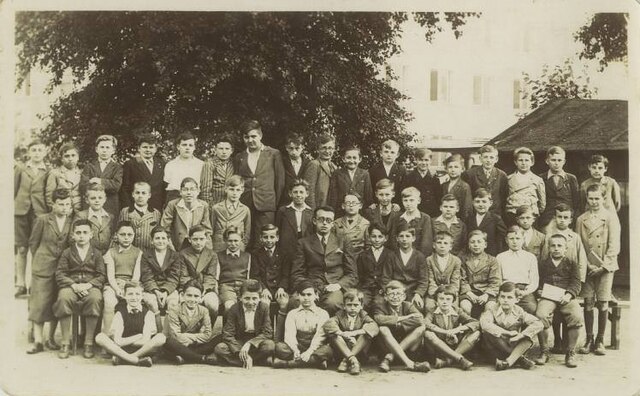Rudolf Vrba was a Slovak-Jewish biochemist who, as a teenager in 1942, was deported to the Auschwitz concentration camp in German-occupied Poland. He escaped from the camp in April 1944, at the height of the Holocaust, and co-wrote the Vrba-Wetzler report, a detailed report about the mass murder taking place there. The report, distributed by George Mantello in Switzerland, is credited with having halted the mass deportation of Hungary's Jews to Auschwitz in July 1944, saving more than 200,000 lives. After the war, Vrba trained as a biochemist, working mostly in England and Canada.
Vrba in New York, November 1978, during an interview with Claude Lanzmann for the documentary Shoah
Vrba at school (front row, fourth left), Bratislava, Czechoslovakia, 1935–1936
Trnava, Czechoslovakia (Slovakia, 2014)
Majdanek concentration camp, 2008
The Vrba–Wetzler report is one of three documents that comprise what is known as the Auschwitz Protocols, otherwise known as the Auschwitz Report or the Auschwitz notebook. It is a 33-page eye-witness account of the Auschwitz concentration camp in German-occupied Poland during the Holocaust.
Sketch from the report: left, Auschwitz I showing the DAW, Siemens and Krupp factories; right, Auschwitz II showing four gas chambers and crematoria.
Alfréd Wetzler
A sketch from the report, showing the rough layout of the crematoria
The Hungarian biologist George Klein saved his life by fleeing, rather than boarding a Holocaust train, after he read the Vrba–Wetzler report as a teenager.








